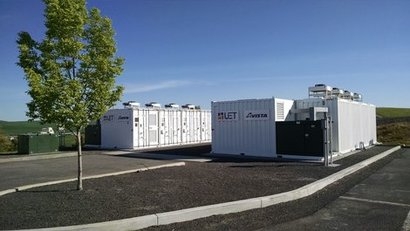
Effectively managing the thermal properties of energy storage devices is the key to avoiding thermal runaway and ensuring safety. Modern energy storage devices, such as supercapacitors and batteries, have highly temperature-dependent performance. If a device gets too hot, it become susceptible to ‘thermal runaway.’ Thermal runaway - or uncontrolled overheating - can ultimately result in explosions or fires. Adopting a well-informed thermal management strategy is necessary for the stable and safe operation of devices. To do this, it is important to understand how certain thermal properties, like heat capacity (Cp), dynamically change during charging and discharging.
Researchers from the Gwangju Institute of Science and Technology (GIST) have recently investigated the thermal properties of electric double-layer capacitors (EDLCs) - a type of supercapacitor having high power and long life - for a technical foundation in thermal measurement and revealed significant information.
“Using the 3ω hot-wire method, we were able to measure the change in heat capacity of EDLCs in real-time in a microscopic electrode-electrolyte volume, which is an active site for the adsorption and desorption of ions” said Professsor Jae Hun Seol, who led the study. The study was made available online on 5 February 2022 and will be published in Volume 188, Issue 122632 of International Journal of Heat and Mass Transfer on 1 June 2022.
The research team conducted experiments both in situ (under static conditions) and operando (during charging). They found that the temperatures of the positive and negative electrodes changed by 0.92 percent and 0.42 percent during charging, which corresponded to 9.14 percent and 3.91 percent reductions in their respective Cp.
“According to thermodynamic theory, the ionic configuration entropy (a measure of randomness) of a system decreases during adsorption, i.e., charging” said Professor Seol. “This also affects the free energy of the system. Together, this leads to a decrease in Cp.”
The team also varied the concentration of the electrolyte, potassium hydroxide, to see how it affected EDLC performance. They found that the EDLC displayed maximum capacitance and Cp reduction when the electrolyte concentration was 8 M. They attributed this to variations in the degree of hydration of ions and their ionic mobility.
“An important aspect of this study is that charging and discharging also alters Cp of EDLCs” added Professor Seol. “These findings will extend our understanding of the underlying thermal physics of EDLCs.”
These results are a major step towards future effective thermal management strategies, which will create safer and more reliable energy storage devices.
For additional information:

